“Gabriel? Auschwitz?”
I look at the van for some logos or markings, but there are none.
“Yes…”
“Cool, hope in!”
The van drives away after the driver, who’s pretty fluent in English for a Polish van driver, makes the formal introductions. He greets me and then we move along to pick up 4 other people that are going to be part of our group. It’s a windy, rainy morning in Krakow, Poland, where the tour begins at an ungodly 8 AM on the dot. The weather is “perfect” as it sets the mood for where we’re going.
About one hour away by car from Poland’s second-biggest city is Oświęcim, a small town of about 40.000 people. This is no ordinary town, as the place is the closest to Auschwitz-Birkenau, the complex of concentration and extermination camps the Nazis built during the war. Why would anyone want to go see such a place?
“Remembrance”, is the reason invoked by our driver.
There’s not much talking in the van. The Polish countryside is sublime, as we pass through forests of spectacular greenery. There were even some proper BBQ places set close to the main road where people could stop and eat. Yet the eerie silence that took over the van was somewhat normal. We were starting to get a sense of where we’re actually going.
In this guide:
Auschwitz at first sight
The van finally pulls into the parking lot, after we pass a huge shopping centre, full with McDonald’s, KFC and other international brands. For a 40.000-people place, this is not your typical scenery in any European city. The first thing that hits you is the number of people coming here to visit the camps. There must’ve been 100 full busses and another 100 smaller vans or private tour cars parked in the huge parking lot. Hundreds upon hundreds of people, young and old, passed us as we were making our way to the main entrance.
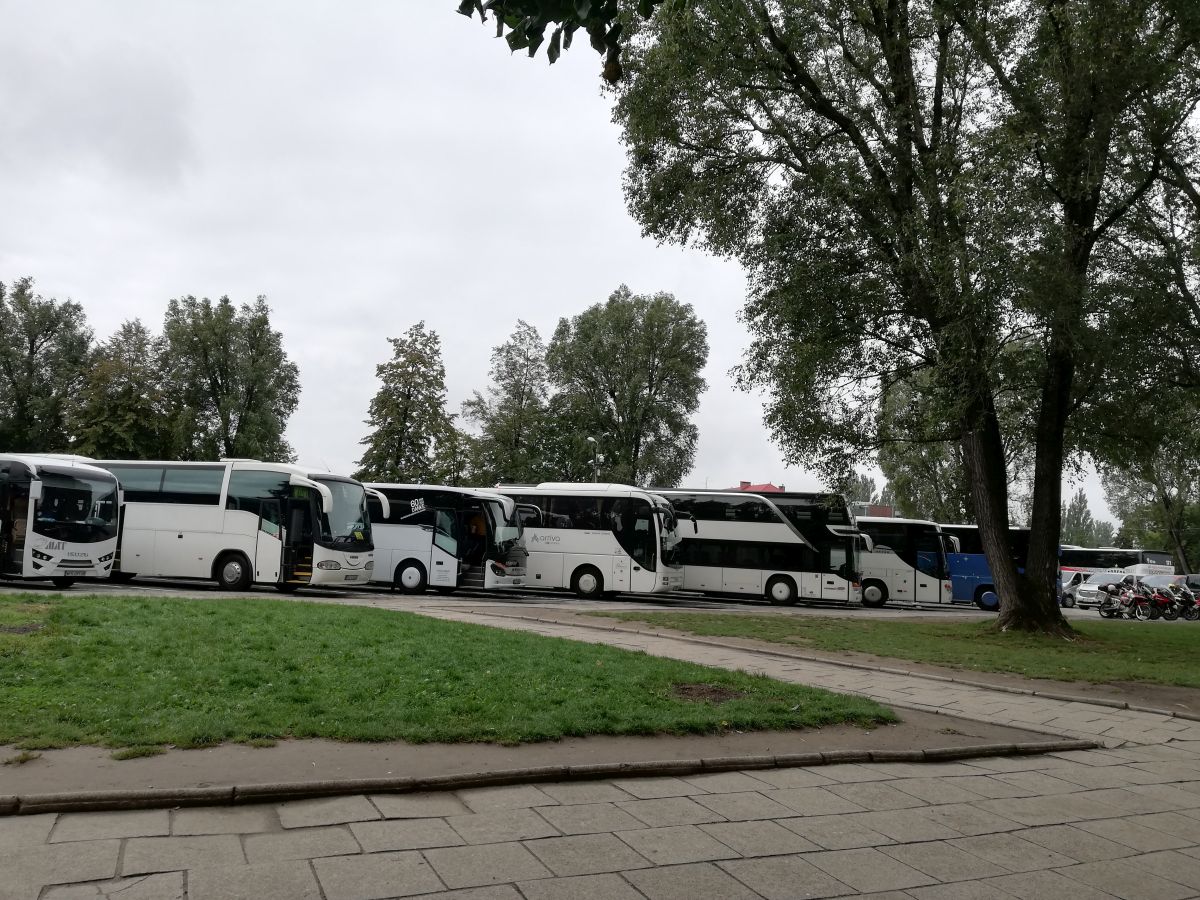
The first thing that you see is an alleyway marked by 18 posts with pictures and testimonies of 18 survivors from Auschwitz. Some of them are Romanians. This is when I felt my first tingles in my stomach as I was reading their stories, a feeling that would get stronger and stronger as the tour through Hell would go on. The positive in this was every single one of those interviewed for the posts at the entrance of the Auschwitz I Museum was still alive and the grandmas and grandpas of tens, if not hundreds of grandchildren of their own. This message was powerful to me because these people were able to climb the ladder up and out of Hell and then start a family and live a relatively normal life.
Through the Gate of Hell
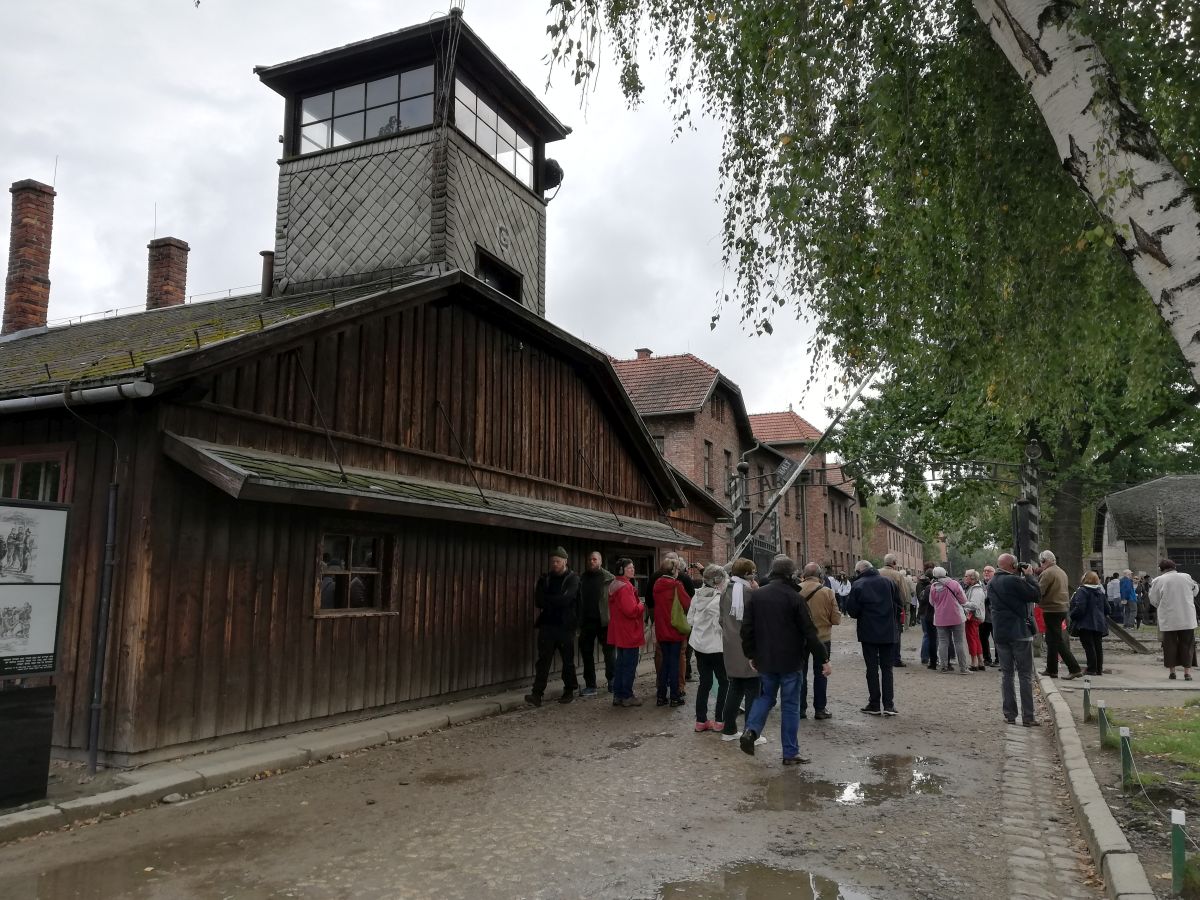
“Arbeit Macht Frei” or “Work will liberate you” is the famous statement that’s written in iron at the top of the entrance to the Auschwitz I camp. If there’s an epiphany of the word “lie”, this must be it. Prisoners that got here during the war were made to believe they were about to be put to work in a labour camp and that was about it. They would’ve never imagined the things they were about to live once they passed through the gate.
The Nazis were so sick and careless, they even installed an orchestra that was playing at the entrance, just to get the prisoners sorted faster and making them feel like everything was in place. This made the prisoners somewhat more cooperant. Until they were tattooed, shaved and left without hair and clothes, dehumanised before even reaching their blocks, they were made to believe everything will be fine. Just to be hit in the back of the head a minute later by the crude reality of what’s to come.
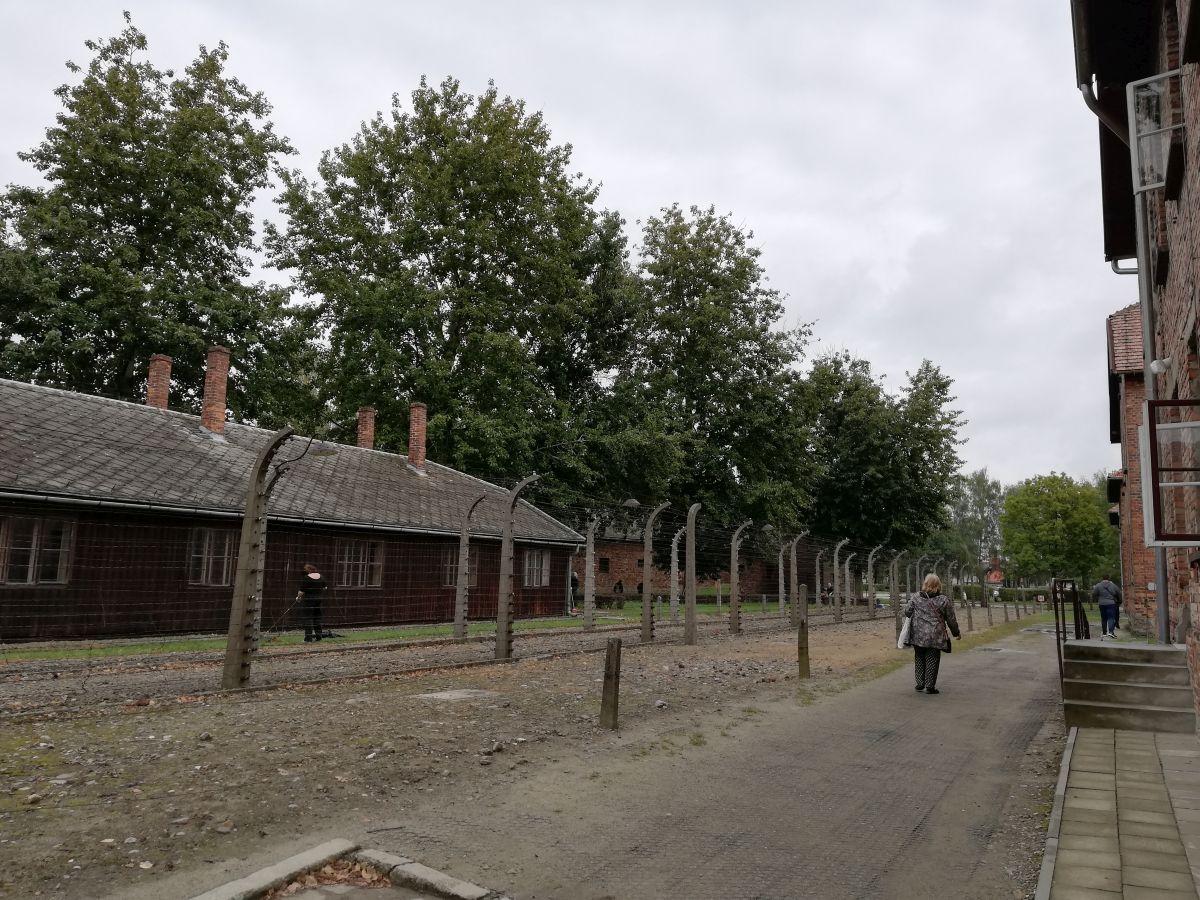
Block No.4 – Extermination
The museum at Auschwitz I, the first part of the huge Auschwitz-Birkenau complex, the main command camp of the later almost 40 subcamps in the entire complex, including the humongous Birkenau, is set around the actual camp and its many blocks. These eerie, almost normal-looking brick buildings were the places where some of the atrocities have taken place. It’s all better described in the exhibits of Block No.4, which was appropriately named “Extermination”.

Walking in the block, you basically are introduced to the journey that the prisoners went through when they’d arrive here. An SS commander would use his thumb to point the prisoners into their directions, rather to the left and into the blocks, where their pain would last longer and they’d be put to labour, or to the right, where they’d go straight to the gas chambers. Just a flick of a wrist, that was it.
For the ones reaching the gas chambers, the prisoners would be poisoned with a gas called Zyklon B. There were hundreds of used cans of this poison on display in one of the rooms. What shocked me the most here was the invoices. The Nazis were ordering the gas pills like you and I would books or a drone from Amazon. Tons upon tons of Zyklon B were ordered from all over Nazi Germany during the war. The even more shocking thing was, war prisoners were also working in chemical factories and were making the gas themselves.
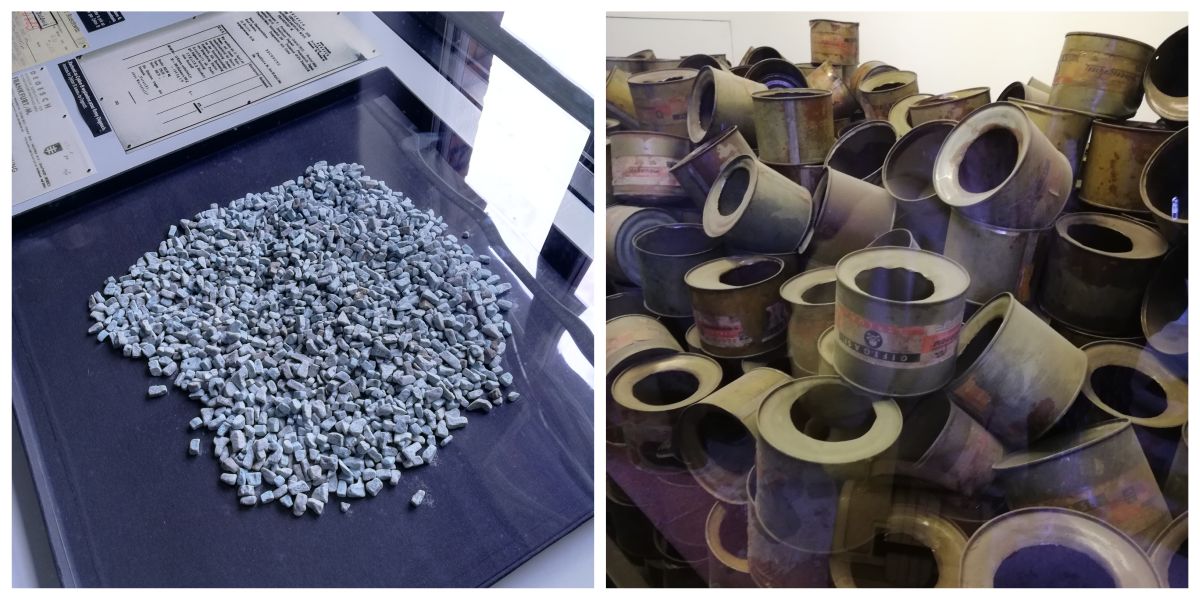
Moving along in Block No.4, your feelings of absolute sadness continue to grow with every room that you’re passing through. All of the rooms are made in such a way that they first show you a handful, then immediately the magnitude of horror that has happened at Auschwitz. You enter the rooms and you first see a display case with a few glasses, pans or suitcases of former prisoners.
Then, as you turn right, it hits you: huge, immense display cases filled with glasses, pans, shoes, suitcases and other personal belongings of the people killed in the camps. Again, the survivors who’ve put the museum together were extremely clever in displaying the magnitude of the crimes that happened there. This is without a doubt NOT your typical Louvre or Hermitage museum. This is serious.
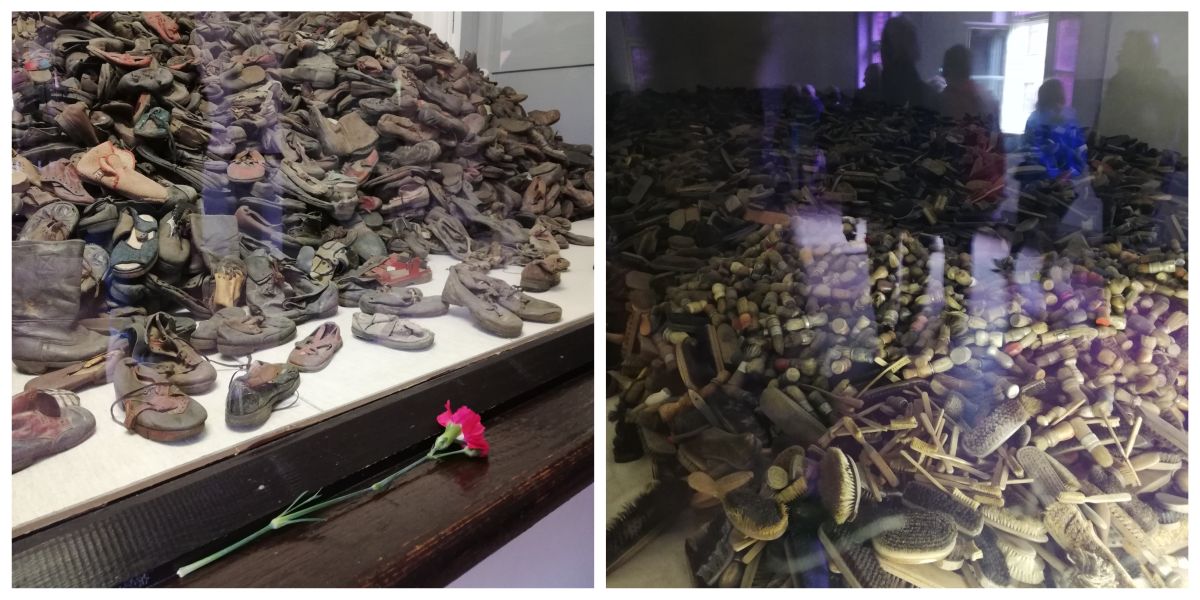
The Hair Room
Out of all the places in the museum, the Hair Room must be the hardest one to be in. As you go into this room, which is one of the only two in the entire museum where you’re not allowed to take pictures, you again see a small display case on your right. In it, there’s a poorly lit table with a few human hairs. Nazis would take the hairs and teeth of dead prisoners before they’d be cremated, and then sell them to factories all over the country for a profit.
You’d think “well, it’s just a little hair, what’s the big deal?” The big deal is, once you turn to your right, you’re faced with probably the biggest display case in the museum, containing 2 tons of human hair from over 40.000 killed prisoners. My hometown has 40.000 residents. I’m usually a pretty calm, reasonable, analytical person. But seeing the Hair Room was no easy task.
My legs started giving up on me as I was making my way inches away from the huge display case. My heart was skipping a beat every few steps. I felt my hands clamping and sweating like I was about to jump off a cliff into the ocean. The room was no longer than 10 meters, but that felt like the longest walk of my life. It was simply terrifying.
Block No.11 – The Hell within Hell
There are many prisoners who’ve managed to somehow survive Hell and live to tell their stories. Of course, everybody has a different tale to tell, but when it comes to the horrors they’ve had to face inside the camps, almost all of the prisoners talked about Block No.11 as being the Hell within Hell. This was the block Nazis used for imprisoning those victims they thought were a danger to the entire good workings of their death camp.
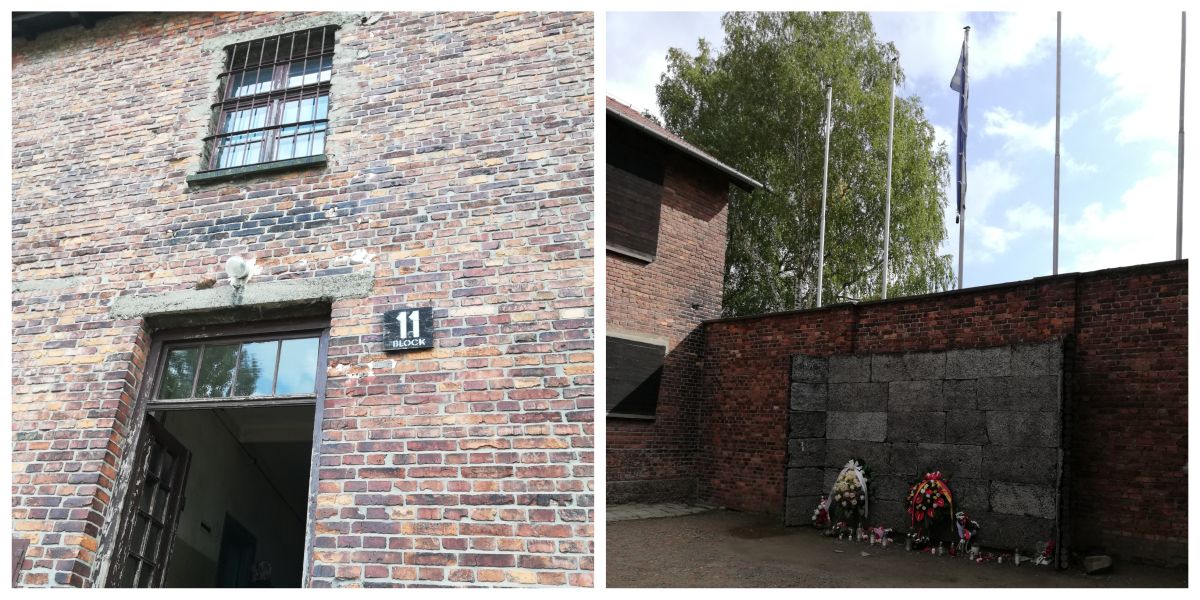
The basement of Block No.11 is hard to describe. It’s the stuff of nightmares. It beats any horror movie you have ever seen. No director, no matter how “creative”, would ever be able to come up with a movie that could beat what the Nazis decided to impose as punishment for unlawful prisoners.
Starvation was the main punishment used in the block. There was this little room of no more than 5×5 meters. In this room alone, called the starvation room, Nazi guards would stuff up to 40 people at the time and leave them there to starve to death. 40 people at a time, that’s 4 and a 0 at the end of it.
Also, for those prisoners that would try to form groups for any particular reasons, there were the “telephone booths”. These were 1×1 meter rooms where 4 prisoners were stuffed, through a small door at the bottom of it, inside and put to sit up for 3 nights in a row. Our guide told us to imagine how it would be like to stay in a telephone booth with your entire family for 3 days and nights with no food, water, fresh air and so on.
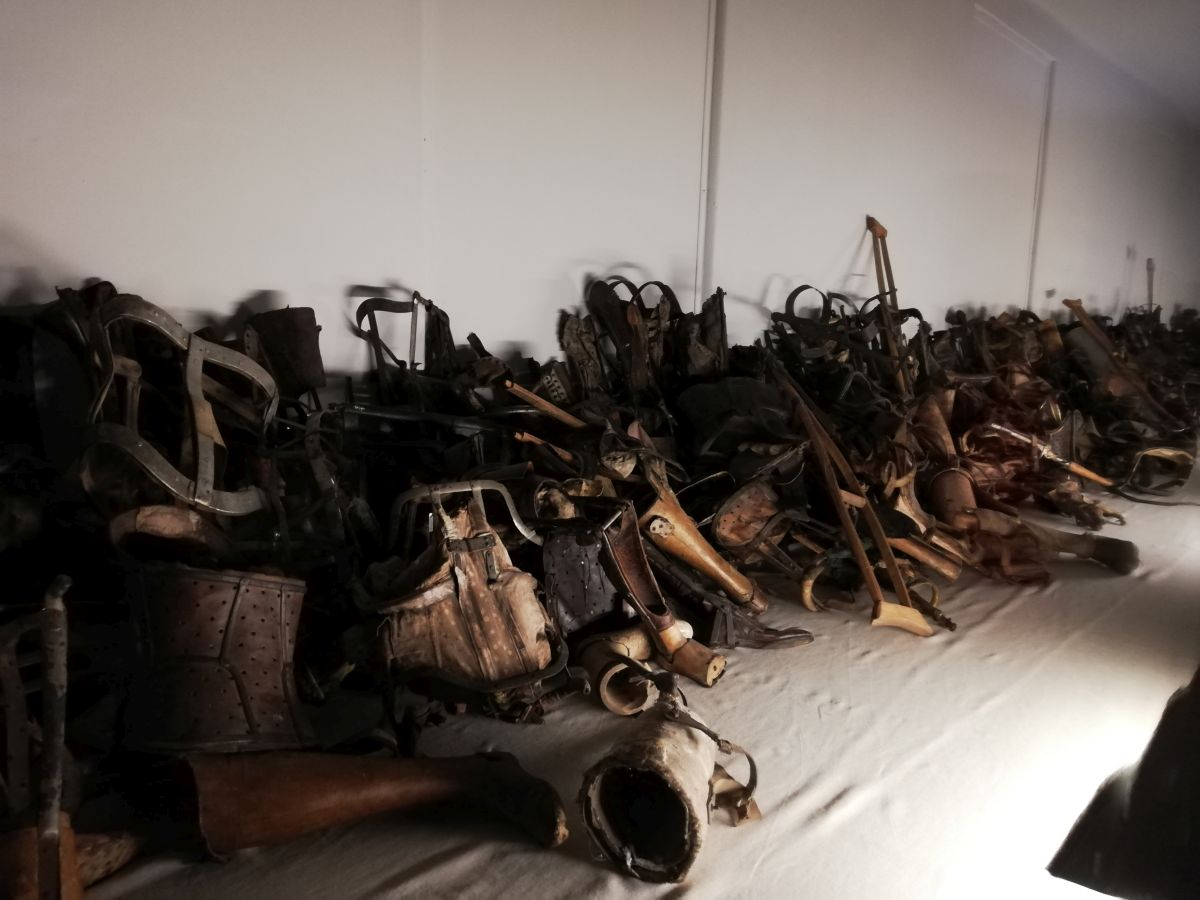
Block No.11 is probably the most important one for the Nazis and their “final solution” that they implemented against the jews. This is because it was in this block where the SS first tried their now-famous Zyklon B gas on prisoners. When the barracks began to fill up, the Nazis bought some poison and used one of the rooms in the basement as a testing ground. As the method proved to be extremely powerful, they build the first gas chamber and crematorium inside Auschwitz I and killed tens of thousands of people in it before moving the mass extermination operations at the Birkenau camp.
Block No.10 – Medical experiments
Next to Block No.11 is the execution wall. Over 1000 people, mostly Polish intelligence agents the Nazis captured during the war, but also other people were shot here during the running of the camps. Right next to it is Block No.10, where the SS doctors performed some medical atrocities. Because calling them experiments… that’s a foul word to be used for what they’ve done in there. They were so painful, the guards installed window blockers made out of wood just so that the screams from the inside were at least dimmed.
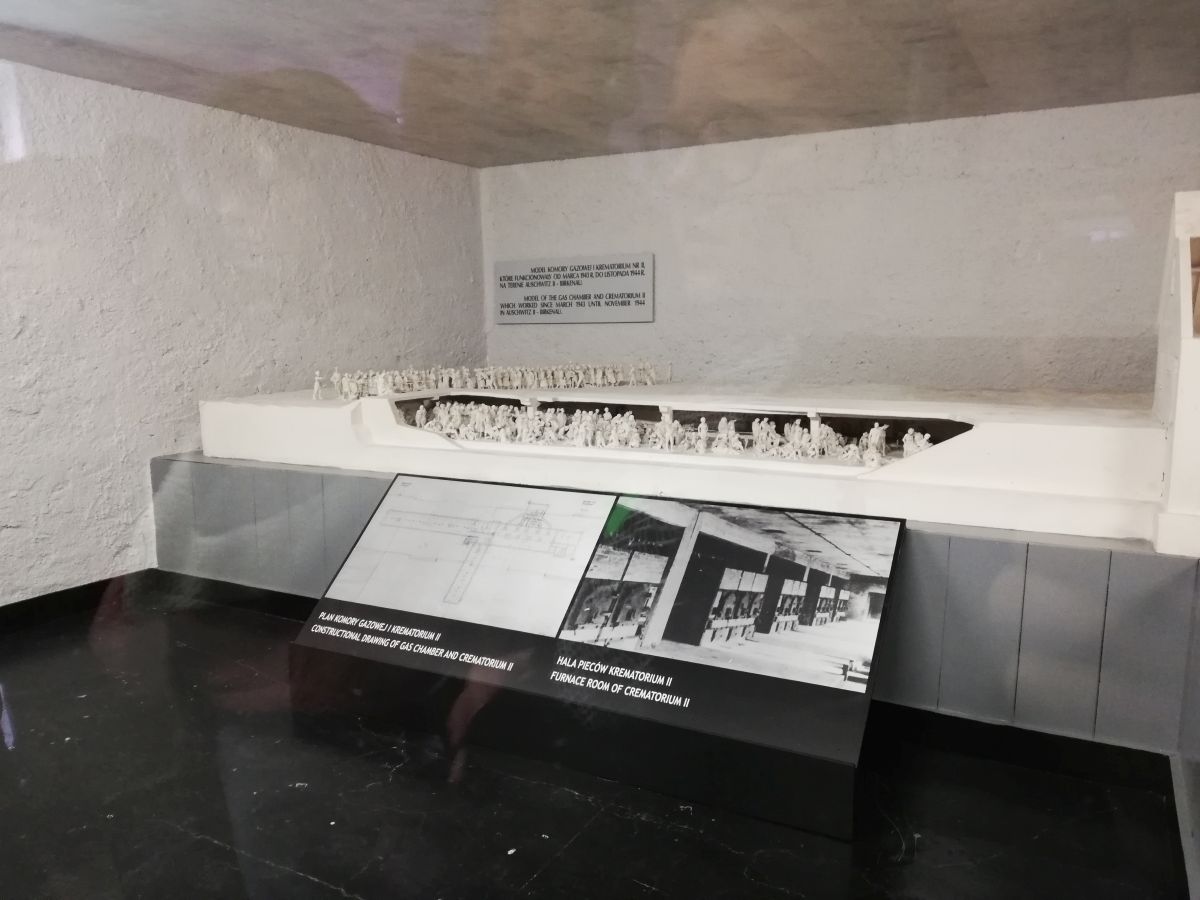
One of the experiments involved injecting a poison up the vagina of female prisoners in order to provoke castration. This would usually end up with an infection of the inner parts of the female reproductive organs, and therefore a painful death for the poor victim. Other prisoners were injected with viruses that would cause them diseases and then they were kept under “medical observation”, while some were left to freeze to death in -30 degrees Celsius weather.
Auschwitz II: Birkenau – Where death was mechanised
After a short van ride from the Auschwitz I camp, we pulled up to another humongous parking lot, this one too filled with busses and vans and cars of all sorts and sizes. I couldn’t even say where we were until I finally saw the famous entrance to the Birkenau camp or Auschwitz II. This is not so much a museum but a huge field lined with the remains of the barracks where over 90.000 prisoners were kept at the time.
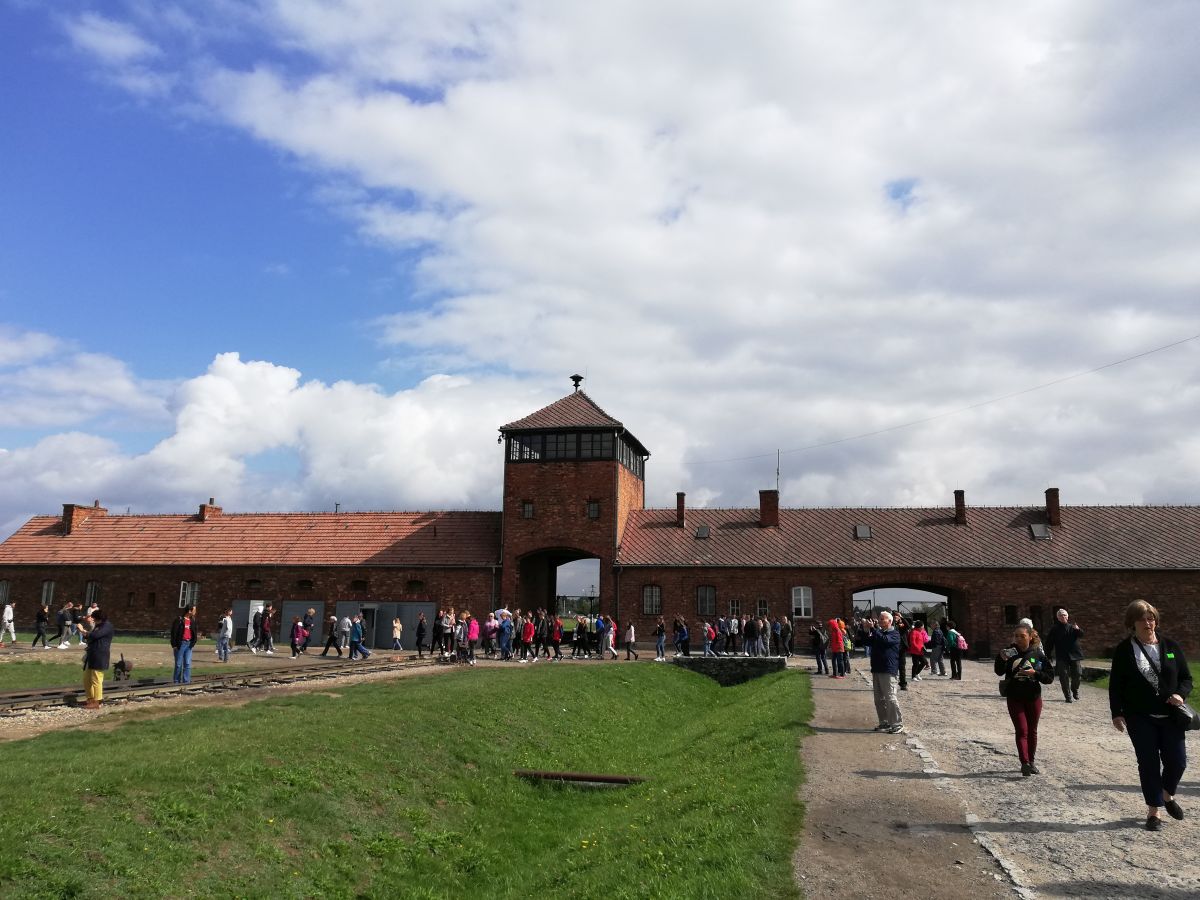
If you’ve ever been to a soccer match, imagine putting 200 football stadiums together. This is how big Birkenau is. If Auschwitz I is somewhat big, at Birkenau the magnitude of the Nazi extermination operations really hits you. In one of the barracks alone, they used to host between 700 and 1000 prisoners at the time. The railway would go straight from the entrance to the middle of the camp where prisoners, after debarking from the train, were sorted between campers or death chamber walkers.
With a single hand gesture, SS guards would either send the victims to the barracks, where living conditions were much worse than those of cattle or straight to the gas chambers. We walked the grey road to Crematorium number 2, one of the 5 in the entire complex. The crematoriums were destroyed right before the Soviet troops got to the camps, but the remains were enough for the world to learn about the unbelievable atrocities that took place there.
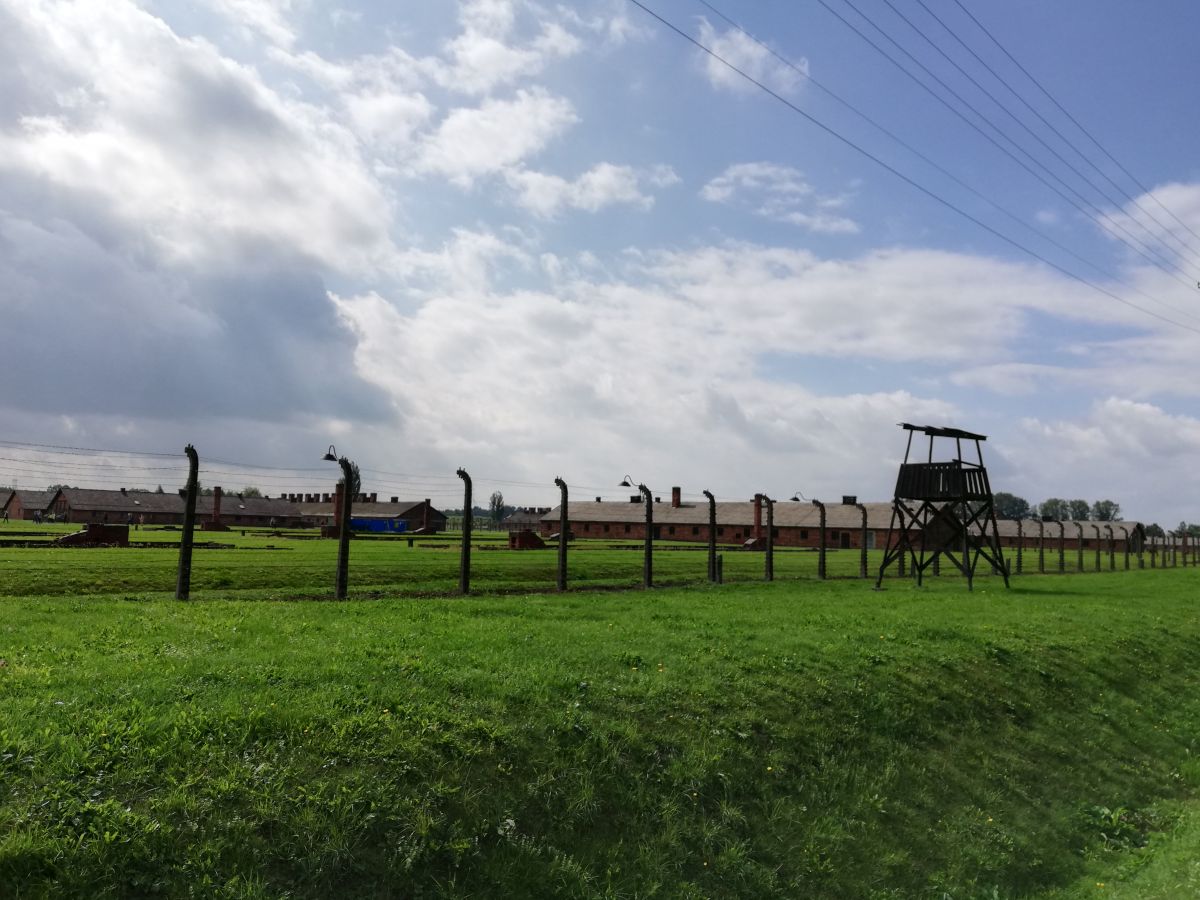
There’s an eerie silence all throughout the Birkenau camp. It is so wide and spread out, you can separate from your group and walk in total silence, looking left and right towards the hundreds of barracks made out of wood or brick. The crazy thing here is, Birkenau was all built by the prisoners themselves, including the gas chambers and crematoriums. Moreover, the people working at the crematoriums were also prisoners.
Which means, in case one prisoner was sorted to go to the camp and the rest of his family was sent to the death chambers, chances were that prisoner would later have to literally walk his family down to the “showers”, release the deadly gas upon them, clear the chamber afterwards, carry their lifeless bodies to the crematorium, burn them down to ashes and then throw their remains in the small water pothole near the death chambers.
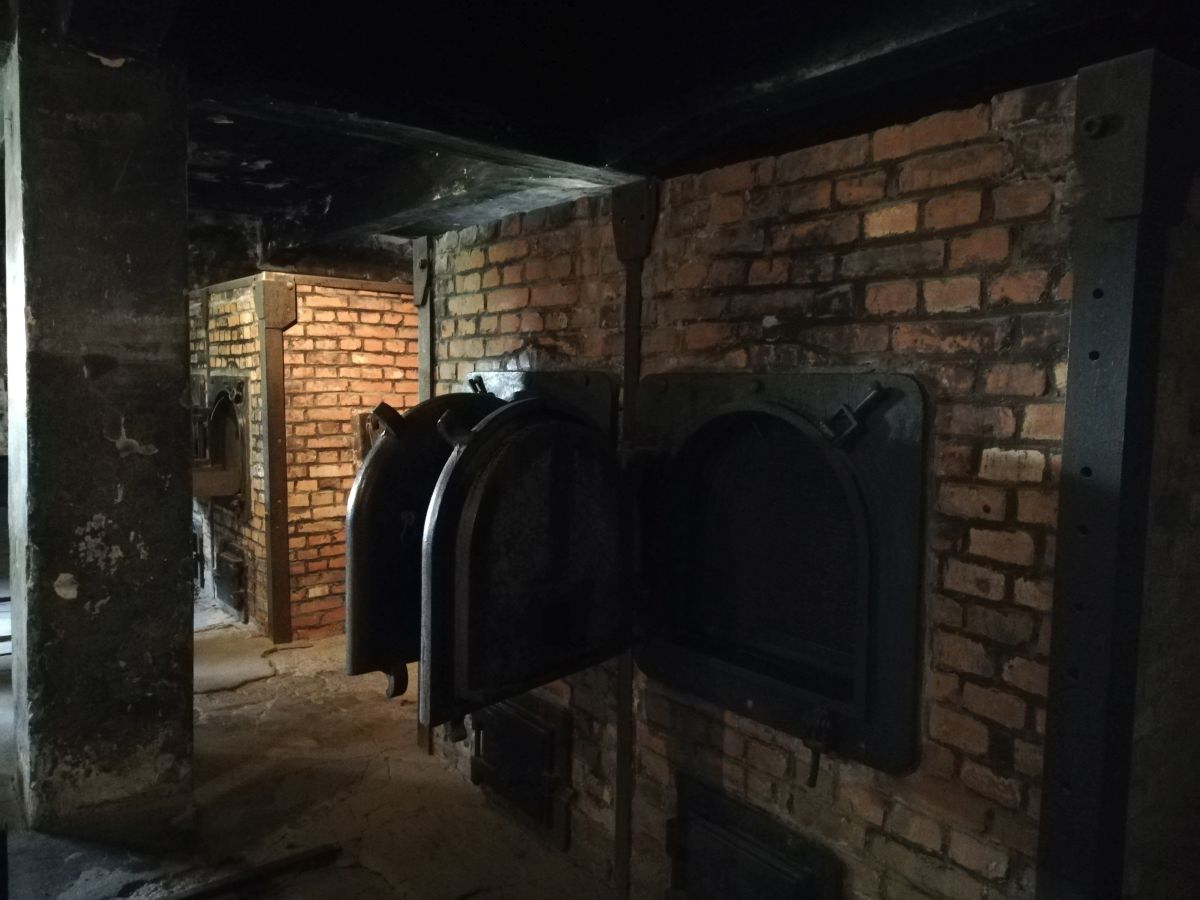
Just writing this makes my hair stand up on my arms. The tour eventually ended with us visiting one of the few barracks that was kept in the original state from when it was used during the war. I’ll just post a photograph of it somewhere down below because I don’t think it needs any sort of description or details.
How my trip to Hell changed me
Jews don’t have Hell. They don’t believe in it, much like many religions on this planet. Yet when you think about what happened to these people at Auschwitz-Birkenau, there’s nothing else to say than this was their Hell right here on Earth. Not only the pains and struggles they went through, but the level of magnitude, the massiveness and the calculated killings that went on inside the death camps were simply hellish. It’s no wonder Hitler is said to have been the worst, most evil human being that has ever lived.
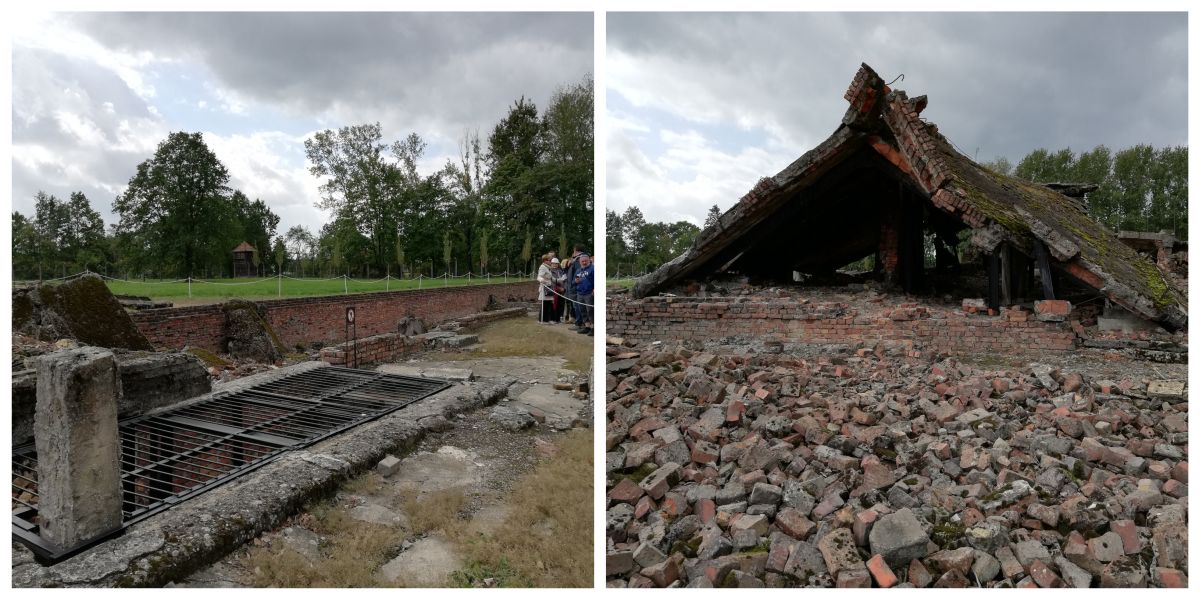
But Hitler was a simple person, just like you and me at first. He had no ideologies about race, gender, equality and mass deaths. Hitler was just trying to avoid school in order to become an artist. He loved singing. Something extremely wrong has happened to his mind somewhere along the way. Regardless of what it was, he woke up someday thinking about all the things that have happened at Auschwitz-Birkenau and all through the Second World War, the deadliest military encounter in history.
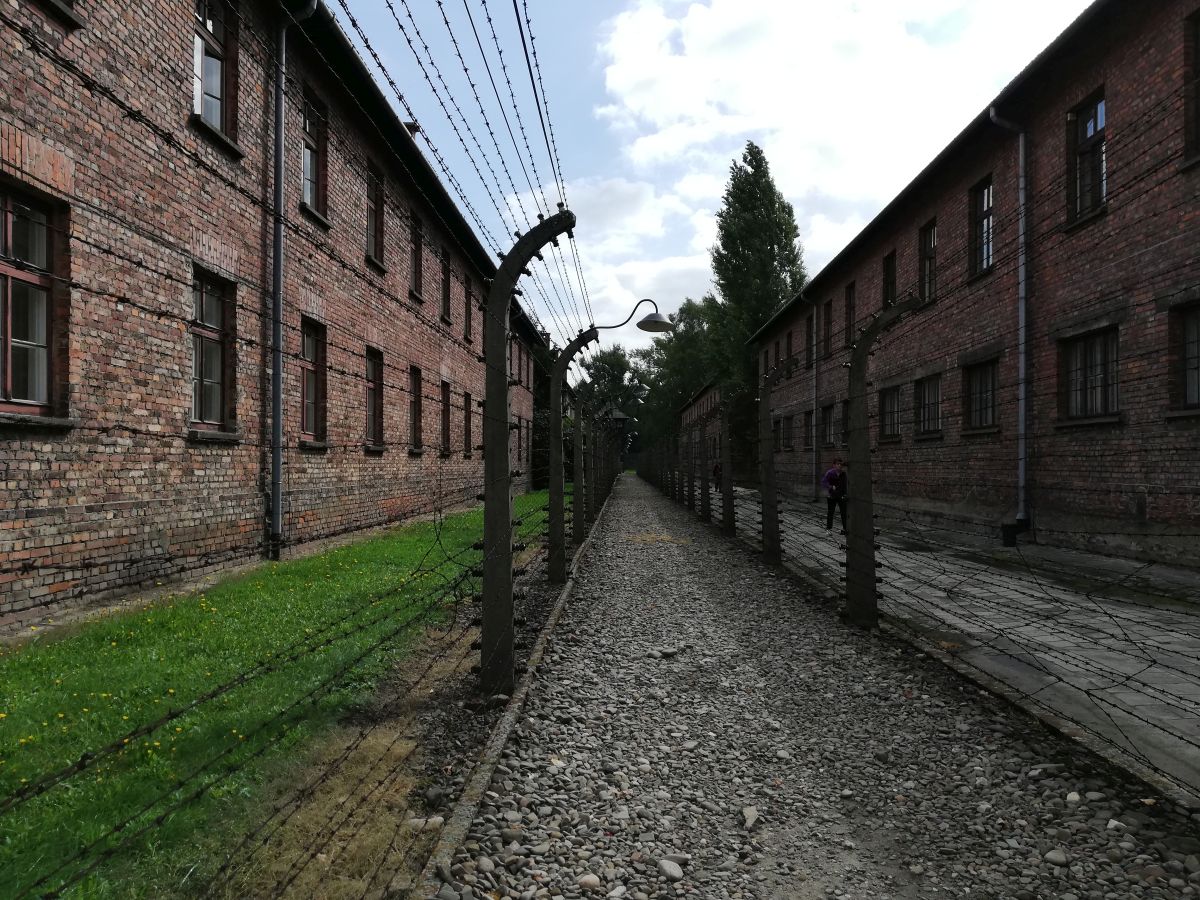
If we are careless enough to not reach out and visit these places, if we are not committing for never seeing the history and its darkest sides, the evidence that still stands there, even if it’s mainly ruins nowadays, we are walking a very thin line between “never again” and “prepare for Hell”. There are countless powerful people around the world that have, let’s say, unorthodox views on life, the Universe and everything else.
Not only those people, those who “control” the world, should go and see Auschwitz. Every single person on this planet, regardless of age, religion, sex, nationality, political views and so on, should go and spend the 7 hours that I’ve spent in that Hell. If they were to do so, chances are no matter how dark their views and plans for tomorrow’s world might be, they’d wake up the next morning rethinking everything that they thought they knew about themselves, life, the Universe and everything else.

I am urging all of you who are materially capable to please book a flight, take your family and friends and go see this place. Take a guided tour. I am telling you the brutal truth: you are not going to like it. People asked me how I liked my trip and were shocked when I told them it was terrible. Why, you’ve been to another country, had some good time, right? No. You will not have a good time.
You will be stunned by what has happened there.
But don’t worry, you will be fine. You and I were lucky enough to just take a guided tour of the death camps. The people who’ve lived those atrocities were killed so that you and I could not only grieve for their souls. But learn from their unimaginable pain. Living more consciously, more lovingly and more freely are just a few of the things you’ll get to learn after visiting the camps. Being a better person, a calmer individual, a more active person in your community. These will be auxiliary improvements you’ll tackle immediately.
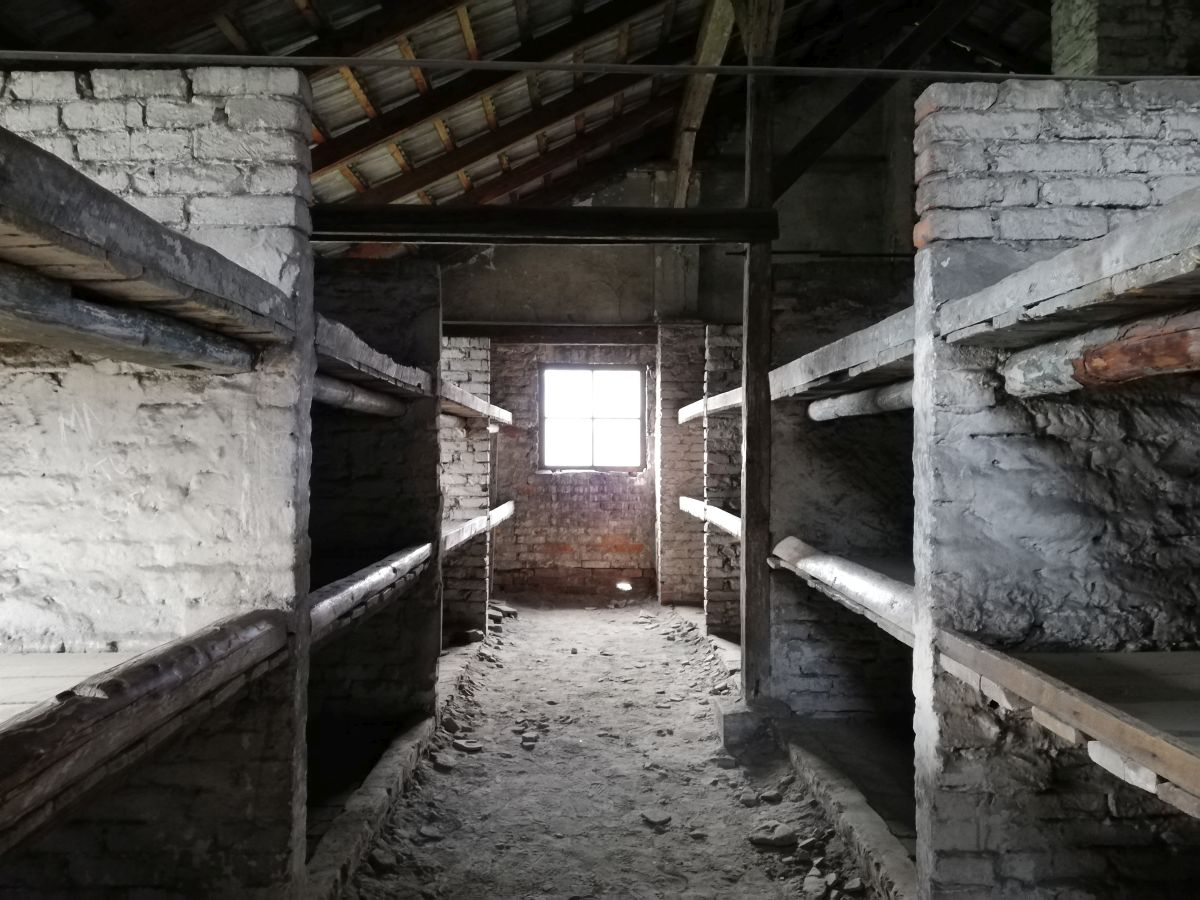
It’s a paradox, how the literal place where Hell on Earth happened can teach you so many things about life. And how to live it not by searching for love from anyone. But by offering it to everybody around you unconditionally.
“The one who does not remember history is bound to live through it again” – George Santayana
Useful links
Auschwitz.org – official website of the Auschwitz-Birkenau Memorial and Museum;
Auschwitz-tours.org – the company I used for booking my guided tour and van transfer from Krakow to the camps and back;
Premium Hostel Krakow – my accommodation in Krakow, extremely affordable, spotlessly clean and central;
One Day in Auschwitz – probably the best documentary I’ve found online about the camps;
Instastories – check out my minute-by-minute day at Auschwitz-Birkenau through my saved Instagram Stories on my personal profile.
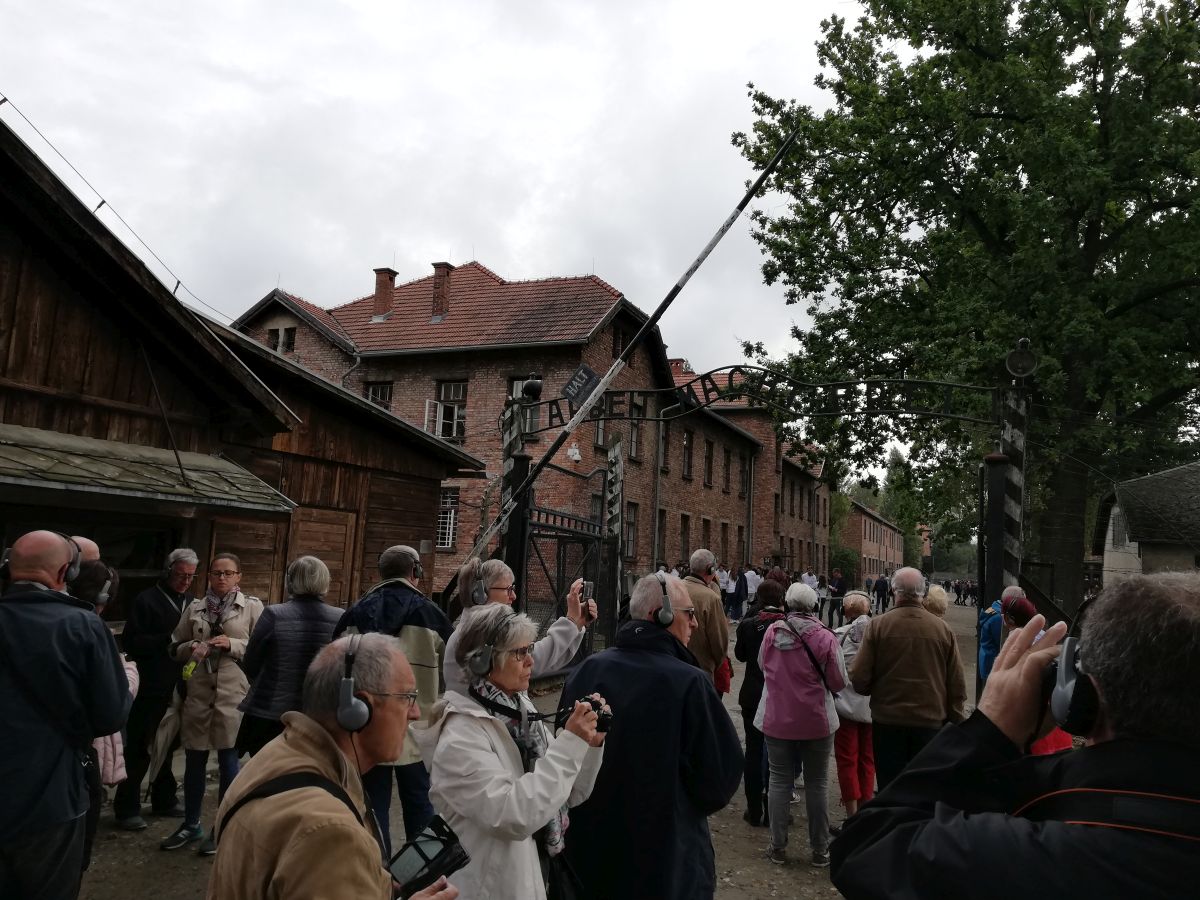


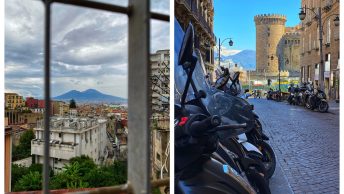
[…] places like Marrakech, Prague, Vienna, Lisbon and Sintra, Barcelona, Naples, Matera, Pompei, Poland… the list is endless. I cannot be grateful enough for having the health and being able to work so […]